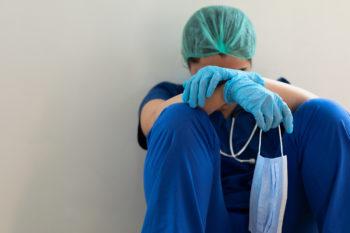$4.8 Million Biometrics Project To Use Human Breath, AI To Detect Fatigue

Texas A&M University and Arizona State University (ASU) are collaborating on a $4.8 million multidisciplinary project funded by the Defense Advanced Research Projects Agency’s (DARPA) Biological Technology Office to create artificial intelligence (AI) for detecting fatigued states using human breath.
The project aims to better understand sleep deprivation, mental and physical fatigue in humans by measuring breath volatile organic compounds (VOC) biomarkers and how they can affect performance, especially in high-stakes environments.
Understanding the breath VOCs will enable researchers to create a set of AI algorithms to detect a person’s fatigued state.
“Fatigue is an important topic for the U.S. Department of Defense and many other sectors in our society. Yet, it is very challenging to quantify fatigue. I am pleased to see the DARPA’s investment in our rigorous scientific approach and its trust in our world-class team,” said Roozbeh Jafari, Tim and Amy Leach professor in Texas A&M’s College of Engineering and the project’s principal investigator
Steven Riechman, associate professor of kinesiology in Texas A&M’s School of Education and Human Development, said the insights may lead to new opportunities for monitoring and predicting fatigue by using wearables to prevent catastrophic failures. He also said there may be new ways to intervene against fatigue to improve resilience in challenging environments and circumstances.
“Comprehensively examining the change in breath VOCs during the progression from rest to fatigue will provide valuable insights into the transitions in metabolic states,” Riechman said.
According to the project’s proposal, these compounds have been used before to detect other health issues, such as bowel inflammation and asthma. They will be key resources of chemical information from all body systems.
The project will be phased from a highly controlled environment, leading to less-controlled, real-life settings.
Texas A&M researchers will collect participants’ breath VOC samples at different states of fatigue with machines that can detect VOCs in the breath samples. They will use wearable monitors and sensors to measure heart rate, body temperature and other biometrics.
Ranjana Mehta, associate professor in the Wm Michael Barnes ’64 Department of Industrial and Systems Engineering and director of Texas A&M’s NeuroErgonomics Laboratory, will lead the creation and execution of fatigue protocols with Riechman by inducing fatigue in a highly controlled environment.
“This project will not only enable us to develop breath and physiological biomarkers of fatigue in general and military populations but also expand our understanding of the interactions between fatigue due to a variety of sources,” Mehta said.
Arul Jayaraman, executive associate dean of the Texas A&M College of Engineering and chemical engineering professor, and Heather Bean, ASU associate professor in the School of Life Science and the Biodesign Center for Fundamental and Applied Microbiomics, will measure VOCs in the breath samples.
Bean says the volume and combination of breath samples at different stages of fatigue protocols will help to advance the understanding of breath VOCs beyond the ability to predict fatigue.
“This study will generate more than 3,000 breath samples, which is an order of magnitude larger than any breath VOC study published to date,” said Bean.
“The team will use pattern recognition and statistical modeling to identify VOCs that can detect and discriminate the types of fatigue studied during the course of the project,” said Ivan Ivanov, clinical professor of physiology and pharmacology at the School of Veterinary Medicine and Biomedical Sciences.
Jafari will lead the project alongside co-investigators Mehta, Jayaraman, Riechman, Bean and Ivanov.
This article by Justin Elizalde originally appeared on the College of Engineering website.





